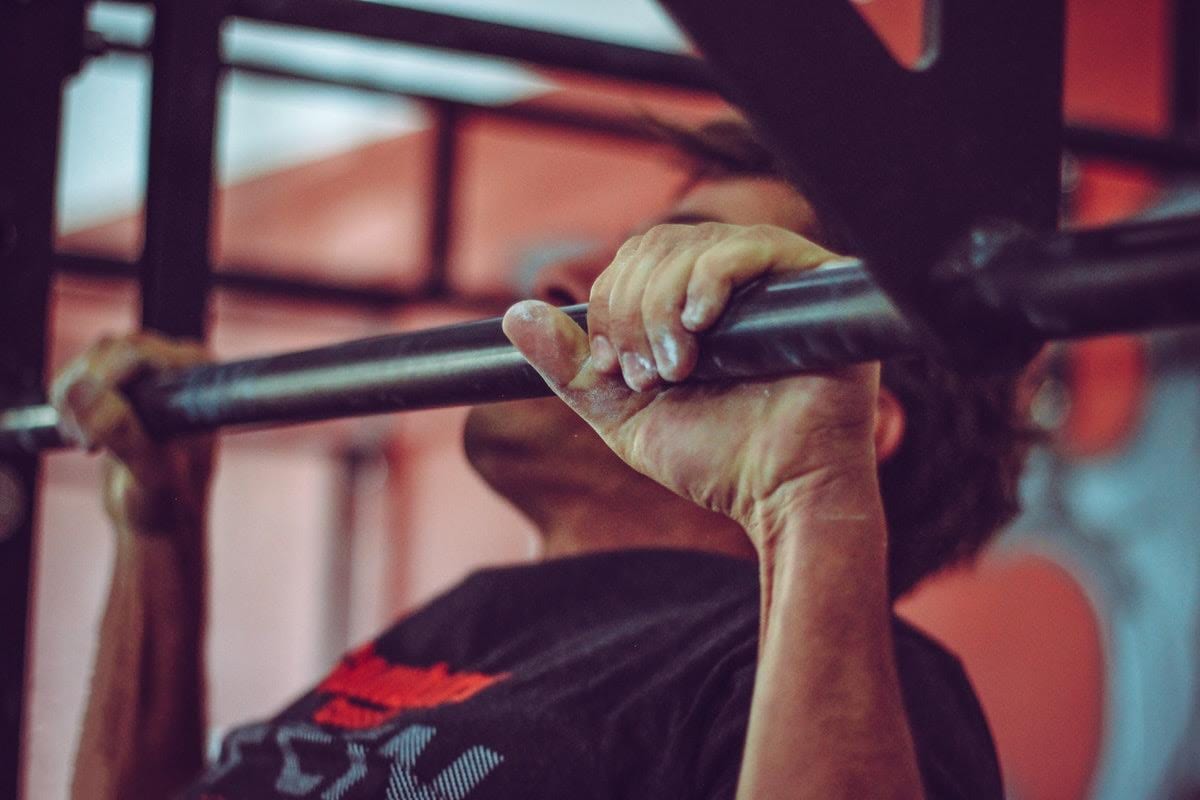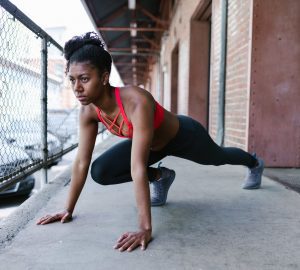How often do you see guys at the gym speeding through sets of pull-ups, yanking themselves over the bar without any regard for proper form? It may look like an amazing feat, but the only thing they’re strengthening is their egos. Subpar exercise form gives subpar results and increases the risk of injury. Instead of getting the full benefit of working just about every upper body muscle along with the core, the guys who bang out a bunch of reps just to look good miss out on the strength- and mass-building effects of this compound exercise.
Don’t be that guy. Learn the right form from the start to maximize results and perform better every time you do pull-ups.
Get a Grip
The way you hold the bar makes a difference in what muscles are targeted when you pull yourself up. True pull-ups use a pronated grip, with the palms facing down or away from you. A supinated grip with the palms facing up or toward you turns the movement into a chin-up and changes the focus of the exercise.
Place your hands shoulder-width apart on the bar, and wrap your hands over it so that it sits close to your fingers. Use a full grip with your thumb around the bar for more strength and control. Placing your hands too wide shortens the range of the pull-up and increases the risk of shoulder pain and injury instead of properly engaging your upper back and lats.
Perfect Your Posture
You’re probably sick of hearing about posture, but slacking off on the way you hold your body during a pull-up is just asking to wind up in a world of pain. Check your alignment before performing any movements. You should be looking forward with your head over your shoulders and your shoulders over your hips. Looking up or angling your neck in weird directions can be painful and may affect other aspects of your form.
Pinch your shoulder blades during the entire exercise to prevent your shoulders from rolling forward and causing pain. Keep a normal, natural arch in your back instead of trying to maintain a straight spine or arching too far forward. If the height of the bar allows, keep your legs straight. If not, bend your knees to allow for a full range of motion.
Perform a Proper Pull
An effective pull-up starts with the shoulders. Engage those muscles before engaging your elbows, and lift your chest toward the bar. Your elbows should go no further than 45 degrees and touch your ribcage at the top. Picture pulling your elbows down toward the floor to achieve this.
During the pull-up, squeeze your abs and straighten your legs as much as you can. Keep your core and glutes tightduring the entire motion. Only count the pull as complete if your chin clears the top of the bar. If it doesn’t, you may need to start with an assisted pull-up or chin-ups until you get stronger.
Lower with Precision
Don’t start singing your own praises the moment your chin first peeks over the top of the pull-up bar. You still have to perform the second half of the movement with good form. Keep your muscles engaged throughout your body, especially in the shoulders, as you lower. At the bottom of the motion, breathe in to prepare yourself for the next rep.
If you have difficulty maintaining form on the way down, practice by doing negatives. Jump or climb up into a pull-up position on the bar before slowly lowering down. This is a good way to get used to the feeling of proper form or to prepare yourself for full pull-ups if you’re not yet capable of performing them.
Don’t Go Halfway
You don’t give half your all when performing heavy lifts or doing HIIT, so why would you only go halfway up or down with your pull-ups? Make every rep count by going through the complete range of motion. Go all the way down until your arms are straight at the bottom, locking out your elbows before pulling up again for another rep. At the top, either your chin should clear the bar or your chest should touch it.
Perform only as many reps as you can without sacrificing good form. The moment your form starts to slip or you feel yourself cheating to squeeze out the next rep, stop. Focus on building enough strength to perform more reps instead of trying to show off with an unrealistic number too early on.
Avoid These Mistakes
Since it’s pretty obvious form is the key to a strong pull-up, make sure you don’t goof it up by making these mistakes:
- Starting with something too hard – Don’t struggle your way through repetitions. Start with an easier version of the exercise instead.
- Adding weight too soon – Some guys strap on weight before achieving good form and put themselves at higher risk of injury.
- Swinging yourself to get up – Called “kipping,” this does weird things to your shoulders and has absolutely no benefit for strength.
- Flaring your elbows – Failing to tuck the elbows in can cause shoulder pain.
- Losing shoulder engagement – If you want more strength and definition, focus on keeping your shoulders tight through the whole exercise.
Learning to avoid problems with your form at the start saves you from unnecessary pain and injury and allows you to progress faster because you don’t have to “un-learn” bad habits.
Final Thoughts
Adding pull-ups to your routine can give you bigger arms, a stronger back, and more pronounced muscle tone, but only if you use the right form. Practice often, starting with modified or beginner versions if you can’t do a full rep, and work your way up to multiple sets of reps with clean form and a full range of motion. Once you have the form down, you can go beast mode and leave all those guys at the gym who cheat at their pull-ups in the dust.
Author Bio
David Bissell is a personal fitness trainer and the creator of Pull-Up Mate X. When he works with clients, he creates customized fitness plans, but you can trust that a decade of experience makes him the guy you want to learn from.









